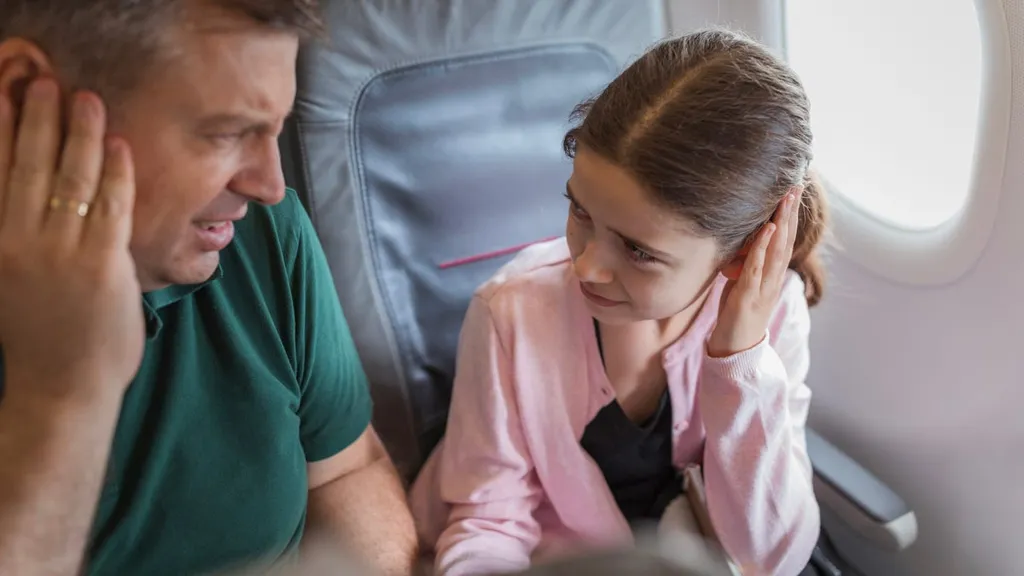The common flu can cause mild to severe symptoms, according to the CDC. Find out what you need to know to prevent the illness.
Few sensations are as irritating or distracting as when your ears feel clogged, stuffy or "full." Whether it happens on a plane, during a sinus infection, or even after sleeping in an odd position, that pressure can turn an ordinary moment into nagging discomfort.
The good news is that ear pressure is both common and usually temporary. "The sensation of ear pressure is something almost everyone experiences at some point," says Dr. Jennifer Lee, an ear, nose and throat specialist at Stanford Health Care.
Here's what's really happening when you feel that pressure, the most common causes behind it, how to find relief and when it may be time to see a doctor.
What is ear pressure?
"Ear pressure" isn't an official or standalone medical diagnosis, but rather a descriptive term people use when they feel blocked or have muffled hearing in one or both of their ears. Many liken it to having their head underwater or to something "clogging" their ear canal. The sensation may be accompanied by mild pain, discomfort or even balance issues. Doctors often call this feeling aural fullness or, when linked to altitude changes, barotrauma.
The most common mechanism involves the Eustachian tube - the narrow canal that connects the middle ear to the back of the nose and throat. Its job is to equalize pressure on both sides of the eardrum, but when it becomes blocked or doesn't function properly, air flow is restricted, thereby creating that stuffed-up feeling.
How the pressure feels can depend on its source. "If from the ear, it can be due to wax, fluid behind the ear or abnormal eardrum movement," Lee explains. "If not from the ear, the sensation can be identical but is usually the result of muscle tightness in the jaw, neck or head, or from irritated nerves in the area."
To figure out the cause, doctors typically review symptoms and medical history, perform an ear exam and, if needed, order a hearing test to check for fluid, infection or nerve-related issues.
What causes ear pressure?
One of the most common culprits of ear pressure is rapid altitude change such as during airplane takeoff and landing, diving underwater or driving through mountains. "That urge to 'unpop' your ears when flying is your body trying to equalize middle ear pressure with the environment," Lee says.
But there are plenty more common, everyday causes as well:
- Colds, flu, sinus infections or allergies can inflame nasal passages and block the Eustachian tube.
- Earwax buildup, fluid behind the eardrum or middle ear issues may physically obstruct sound and airflow.
- Jaw and muscle issues such as TMJ disorders, tension headaches, dental problems or even acid reflux can mimic ear-related fullness. "Such causes are much more common than people realize," Lee notes.
Less common but more concerning causes Lee points to include:
- Menière's disease (episodes of vertigo with ringing in the ear)
- Vestibular migraines
- A middle ear bone disorder known as otosclerosis
- Tumors behind the eardrum
In these situations, pressure is often accompanied by other symptoms such as dizziness, hearing changes, drainage or imbalance, says Lee.
How to unclog ears; How to relieve ear pressure
If your ears feel blocked, there are often simple ways to find relief. Everyday actions such as swallowing, yawning, chewing gum or sucking on candy can often do the trick because they activate the muscles that open the Eustachian tubes and can allow trapped air to escape.
Some people also find relief with the Toynbee maneuver, which Lee says involves taking and holding a breath through your nose, pinching your nostrils closed while keeping your mouth shut, then swallowing. Another option is the Valsalva maneuver, which requires pinching your nose, closing your mouth and blowing gently out through your ears. While this can provide temporary relief, Lee cautions that it does not actually open the Eustachian tube. It instead "forces air through a closed Eustachian tube." Because of this, "if there is fluid and pain, then no maneuver is advised."
Moisture can also play a role in easing symptoms. A warm shower, steam inhalation or saline spray may reduce congestion and make pressure-equalizing maneuvers more effective.
As tempting as it may be, never insert cotton swabs, fingers or other objects into your ear. "This can damage the eardrum or push wax deeper, making things worse," warns Lee.
Most cases of ear pressure resolve on their own, but there are times when medical attention is necessary. If the sensation lingers or worsens, or if it is accompanied by hearing loss, dizziness, facial weakness, ear discharge or severe or recurrent pain, Lee says it's best to see a doctor or specialist.
"The challenge is that patients often believe there must be a quick fix," Lee says. "But many cases stem from non-ear issues such as muscle tension or nerve irritation." In such cases, she says, an ENT or related specialist can help identify the cause of the problem and recommend treatment.
